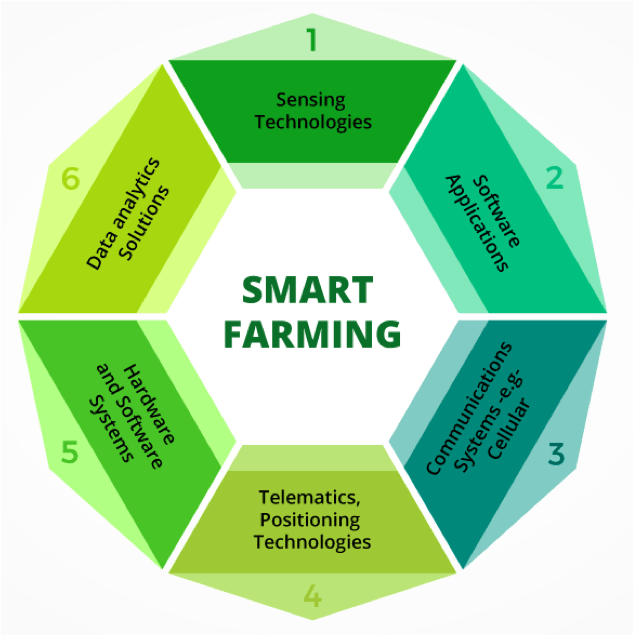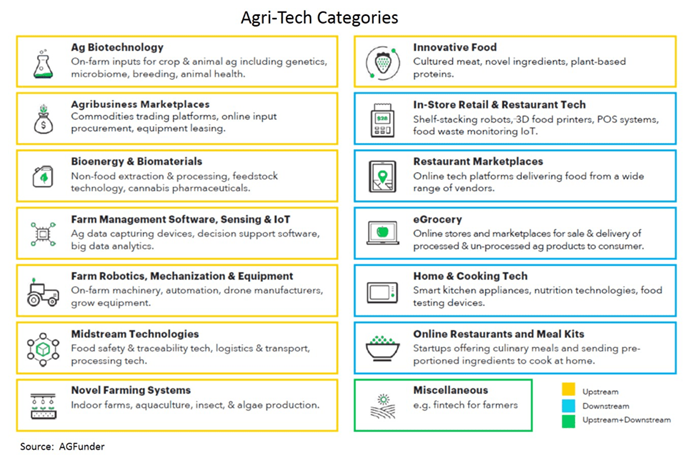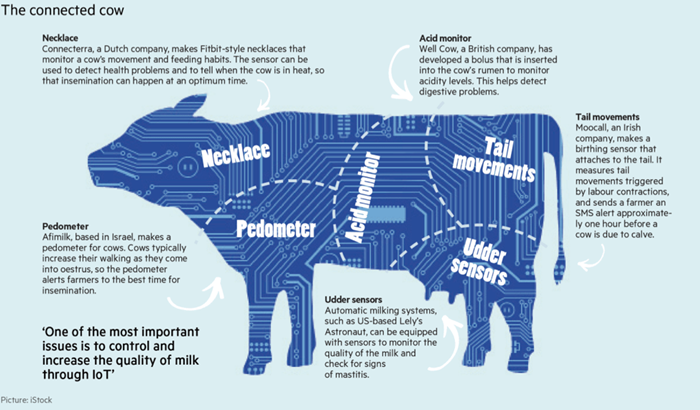Smart farming refers to a new way to manage farms using modern information and communications technologies to increase the quantity and quality of agricultural products, improve efficiencies and productivity, as well as reduce costs.
By leveraging the capabilities of the internet of things (IoT), smart farming can utilize technologies such as sensors, software, connectivity, location information, automation and data analytics, to make farming processes data-driven and data-enabled.
With IoT, farmers can monitor field conditions without even going to the field and make strategic decisions for the whole farm, a particular crop or even a single plant (or animal), if necessary.

Many of these solutions are based on low power wide area (LPWA) technology – such as Narrowband IOT (NB-IoT), LoRa, LTE-M and SigFox. All of these technologies have the characteristics of low power, low-cost communications and are capable of providing long-range communication up to 10-40km in rural zones and 1-5km in urban zones. Additionally, they all offer long battery life (10+ years), making them highly desired for IoT applications that only need to transmit tiny amounts of data.
Why is this important?
According to the statistics from the UN Food and Agriculture Organization, farmers across the globe will have to grow 70% more food in 2050 than they did in 2006 to meet the expected population growth. The use of smart technologies will enable the smart farm to improve its operational performance by analyzing the data collected and acting upon it in ways that increase productivity or streamline operations.
Smart farming is part of the agri-tech industry. The food and agriculture industry represent over 15% of global GDP ($7.8 trillion) and employs close to 40% of the global workforce. As such it is no surprise that similar to all segments of society, this is an industry that's beginning to experience radical transformation through technology. According to AgFunder’s annual AgriFood Tech Investing Report, investment in farm management software, sensing and IoT reached $975 million (up 65% from $572m), while investment in the entire agri-tech industry reached $16.9 billion in 2018 (up 11% from 2017).


Large farm owners can use wireless IoT applications to monitor the location, well-being and health of their cattle. With this information, they can identify sick animals, so that they can be separated from the herd to prevent the spread of disease.
One of the many ways farm owners are keep tabs on their herd is through GPS sensors. These devices allow farm owners to track their cattle over long distances, even in remote areas. Using different scenarios/options they can be provided this information in different ways:
- Geo-fencing – when the device leaves a pre-defined area
- Chrono-fencing – the device sends a status update after staying at a location for a certain pre-defined time
- On-demand location request – request to device to update its status and position.
By collecting GPS data on cows, owners can easily track their cattle at any given moment during the day.
Smart greenhouses
IoT is also playing a role to make greenhouses more efficient. Traditional greenhouses control the environmental parameters through manual intervention or a proportional control mechanism, which often results in production loss, energy loss and increased labor cost.
IoT-driven smart greenhouses can intelligently monitor as well as control the climate, eliminating the need for manual intervention. Various sensors are deployed to measure the environmental parameters according to the specific requirements of the crop. That data is stored in a cloud-based platform for further processing and control with minimal manual intervention. The smart greenhouse becomes a self-regulating, micro-climate-controlled environment for optimal plant growth
The future of food
There is no doubt that technology is changing every aspect of every industry, radically transforming traditional business models. And farming is no different. Soon your local farmer will be spending as much time managing their digital data as they will their dairy herd and the type of labor they need will be less manual and more scientific.
Smart farming has a real potential to deliver a more productive and sustainable form of agricultural production, based on a more precise and resource-efficient approach. Additionally, technologies such as IoT as well as blockchain can be leveraged to enable better food traceability, which in turn will lead to increased food safety.Finally, smart farming could have positive environmental impacts, through more efficient use of water, or optimization of treatments and inputs.
